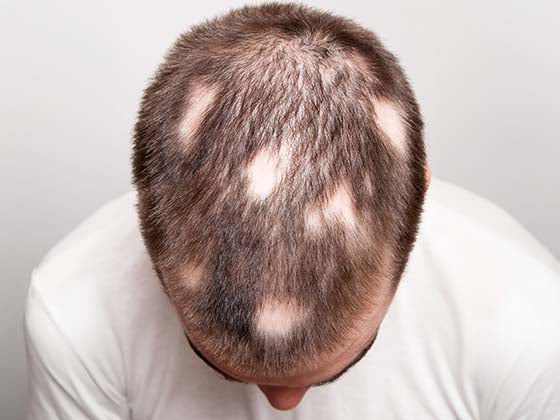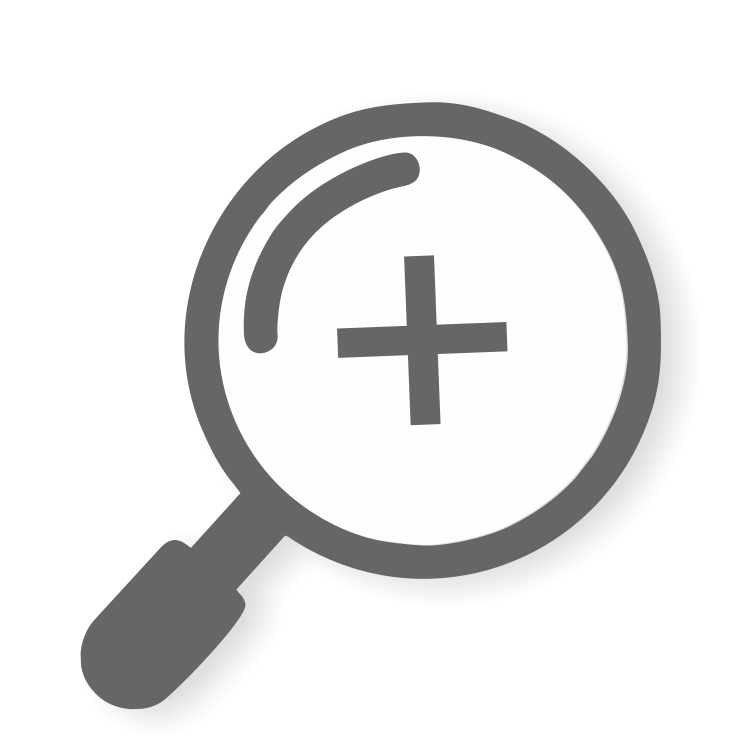Uncombable Hair Syndrome (UHS) is a rare hereditary disorder that causes hair to become dry, brittle, and difficult to care for. It is generally visible at an early age, usually in infants or toddlers. In this blog, we will look at uncombable hair syndrome, its causes, and care tips.
What Is Uncombable Hair Syndrome?

UHS is a rare hereditary disorder that makes hair dry, frizzy, and difficult to style or comb. People with UHS frequently have hair that sticks up or stands out in unexpected directions, making it difficult to manage and smooth down. The issue is most visible in youth, but it can remain until adulthood, with hair seeming "uncombed" or unruly despite styling efforts.
Defining the Condition: Key Characteristics of UHS

UHS is an uncommon disorder marked by specific hair characteristics that make it difficult to manage or style. The disorder predominantly affects the texture and shape of the hair, resulting in a number of essential features:
-
Frizzy, unruly hair: The most distinguishing symptom of UHS is frizzy hair that refuses to lay flat despite brushing or combing. It frequently sticks out or stands up, giving the hair a "combed but unkempt" look.
-
Dry and brittle texture: People with UHS have hair that is dry, coarse, and prone to breaking. The hair is not as smooth as common hair types and may feel rough or fragile to the touch.
-
Irregular hair shaft shape: Individuals with UHS generally have uneven, flattened, or triangular hair shafts rather than spherical ones, as seen under a microscope. This unique structure prevents the hair from correctly aligning, contributing to its frizzy and wild appearance.
-
Resistant to styling: UHS-affected hair is notoriously difficult to style. Regardless of how often it is brushed, combed, or flattened, the hair will frequently return to its frizzy, out-of-control form. Standard grooming practices are often ineffective.
-
Prominent in childhood: UHS is most commonly seen in early life, particularly in newborns and toddlers. It is visible as a child's hair begins to grow and become more textured. For some people, UHS persists into adulthood, however its severity may decrease with age.
-
Normal hair growth: Despite the difficulties of managing it, people with UHS usually have normal hair growth, which means they don't lose hair. The problem is with the texture and style, not a lack of hair growth.
-
Genetic inheritance: UHS is often inherited in an autosomal dominant way, which means that only one parent must pass on the gene for the illness to develop. Mutations in specific genes alter the structure of the hair.
Genetic Factors: What Causes Uncombable Hair Syndrome?

UHS is caused by genetic abnormalities that alter the structure of the hair. These mutations affect the proteins that control the structure and strength of the hair shaft, giving the disorder its specific characteristics. UHS is normally inherited in an autosomal dominant way, which means that only one parent must pass on the defective gene for a child to acquire the disorder.
-
Mutations in specific genes: UHS is mostly caused by mutations in three genes: PADI3, TGM3, and KRT71. These genes are critical in the creation of the hair shaft, especially in keratin production. Keratin is a structural protein that helps hair maintain its structure and strength. When these genes are altered, the keratin in the hair is damaged, resulting in uneven, weak hair shafts that generate the characteristic frizz and tangling seen in UHS.
-
PADI3 gene mutation: The PADI3 gene mutation is the most common cause of UHS. PADI3 is involved in altering the proteins that make up the hair shaft. When this gene is mutated, it causes aberrant hair development and texture, resulting in the distinctive frizzy hair.
-
TGM3 and KRT71 gene mutations: Mutations in the TGM3 and KRT71 genes contribute to UHS; however, they are less prevalent. TGM3 is involved in the production of the hair's outer layer (cuticle), whereas KRT71 is a keratin gene that influences hair shape. Mutations in either of these genes can result in the development of UHS.
-
Inheritance pattern: UHS is autosomal dominant; one parent with a faulty gene has a 50% probability of passing it on to their offspring. This implies that those with UHS are more likely to have at least one affected parent. However, even among family members carrying the same mutation, the severity and precise presentation of the illness can differ.
How Rare Is This Hair Disorder?

While the precise number of instances is unknown, some estimates indicate that fewer than 100 have been documented worldwide. This makes UHS one of the most uncommon inherited hair disorders. Due to its rarity, many persons with UHS may go undetected or be misdiagnosed because the disorder is not commonly recognized by all healthcare experts.
Identifying and Diagnosing Uncombable Hair Syndrome

Identifying and diagnosing Uncombable Hair Syndrome (UHS) often requires clinical observation, family history, and, in some cases, genetic testing. Because UHS is a rare and relatively unknown condition, it can be difficult to diagnose, and it is sometimes mistaken for other hair disorders that produce frizz or breakage. However, numerous critical actions can help healthcare professionals and individuals identify UHS, including clinical observation and symptoms, family history and genetic inheritance, microscopic examination, testing, ruling out other illnesses, and consulting with a dermatologist or geneticist.
Signs and Symptoms to Look For

Uncombable Hair Syndrome (UHS) is identified mostly by the texture and appearance of the hair. Here are the key indicators to look for:
-
Frizzy, unmanageable hair: The most visible sign of UHS is hair that is difficult to style or manage. Despite brushing and combing, the hair often seems frizzy, disheveled, and unable to lie flat. It may stand up or fan out in various ways, making it appear "uncombed."
-
Dry and brittle texture: People with UHS frequently have hair that feels dry, coarse, and fragile. This dry texture may make the hair more prone to breakage, especially when combed or brushed. It lacks the smoothness and gloss of normal hair and typically feels harsh to the touch.
-
Irregular hair shaft shape: Under a microscope, someone's UHS hair may display structural anomalies. The hair shafts may be flattened, triangular, or twisted. These unique shapes make it difficult for the hair to lie flat, contributing to the frizz and unruly texture.
-
Hair that stands up or sticks out: Another important sign is hair that rises or sticks out from the scalp, even after grooming. This is due to the uneven shape of the hair shafts, which do not align correctly. No matter how often you brush or style your hair, it resists being smoothed down.
-
Unusual appearance from a young age: UHS is most noticeable in early childhood, usually between the ages of three and six months, when a child's hair begins to grow. It is visible in babies and toddlers when their hair thickens and frizzes while remaining difficult to comb and control. For many people, the disease worsens with age, while it might occasionally improve.
-
Normal hair growth: Despite textural issues, persons with UHS typically have normal hair growth. Their hair develops at the normal rate, although it may be thinner or more fragile than others. UHS does not normally cause hair loss.
-
Family history: Because UHS is inherited autosomally dominantly, having a family member with a similar hair texture or a history of UHS can provide a clue. If a parent has UHS or a history of unruly hair, the child is more likely to get the condition.
-
Medical Concerns: UHS is mostly a cosmetic disorder affecting solely the hair. It has no other adverse effects on health or physical development. Hair texture difficulties are limited to growth and style challenges.
Diagnosis Methods: From Observation to Genetic Testing

Diagnosing UHS entails a series of processes that begin with clinical observation and progress to more advanced diagnostic tools like genetic testing. Because UHS is uncommon and its symptoms might mimic other hair disorders, an exact diagnosis is required to confirm the condition and rule out alternative causes. Here's a summary of the procedures used to diagnose UHS:
-
Clinical examination: The doctor will examine the hair for typical frizziness, texture, and hair shaft abnormalities.
-
Family history: Knowing if similar hair texture issues run in the family can assist in determining the condition's genetic inheritance.
-
Microscopic examination: A close-up view of the hair shaft under a microscope will reveal the flattened, twisted, or irregular shape that indicates UHS.
-
Other conditions: To rule out any potential misdiagnoses, the doctor will look into other hair disorders.
-
Genetic testing: If necessary, genetic testing can confirm mutations in genes such as PADI3, TGM3, or KRT71 to definitively diagnose UHS.
While UHS is a rare condition, these diagnostic methods, particularly when combined, allow healthcare professionals to accurately identify and distinguish it from other hair-related issues.
When to Consult a Dermatologist

Consult a dermatologist if you have recurrent frizz, abnormal hair texture, excessive brittleness, or a family history of such symptoms, especially if they affect your confidence or create distress. A dermatologist can accurately diagnose UHS, offer hair care advice, and guide you through the condition's therapy options. Getting a professional perspective can provide clarity and help you avoid unneeded frustration when dealing with problematic hair.
Managing and Caring for Uncombable Hair

Managing and caring for hair damaged by UHS can be difficult, but with the appropriate tactics, it is possible to keep the hair healthy and manageable. While there is no treatment for UHS, the goal is to reduce frizz, breakage, and make the hair easier to style. Moisturizing and hydrating products, a gentle hair washing regimen, careful detangling, heat styling, frequent cutting, protective hairstyles, avoiding dangerous chemicals, patience, and consistency are some of the most important strategies and practices for treating UHS. By following these guidelines and developing a hair care routine adapted to the demands of UHS, you may help decrease the difficulties of managing this particular hair condition while keeping your hair healthy and looking great.
Hair Care Tips for Children with UHS

Caring for children with UHS necessitates a compassionate, persistent approach to keeping their hair healthy and manageable while reducing the frustration associated with its unruly nature. Children with UHS frequently have hair that is difficult to maintain, prone to frizz, and more fragile, necessitating special care to avoid damage. Some important hair care advice for children with UHS includes using soft, moisturizing products, washing hair less frequently, using a wide-toothcomb or fingers, avoiding heat styling, trimming periodically, protecting from sun and friction, selecting appropriate hairstyles, being patient and understanding, and educating.
Gentle Hair Products to Use

When caring for hair with UHS, use soft, moisturizing solutions that decrease frizz, prevent breakage, and promote healthy hair development. Because UHS hair is dry, delicate, and difficult to handle, using the appropriate products is critical to keeping it smooth, moisturized, and nourished. Gentle, sulfate-free shampoos, moisturizing conditioners, leave-in conditioners, hair oils, detangling sprays, deep conditioning masks, frizz control creams, heat protectants, and silk/satin accessories are all excellent options for treating UHS. By utilizing these mild treatments, you can help manage UHS hair's specific texture, keep it hydrated, and prevent frizz, all while making it easier to maintain.
Can Treatments Improve Hair Manageability?

Yes, therapies can improve the manageability of hair afflicted by UHS, but it's crucial to note that these treatments will not always "cure" UHS. Because UHS is a genetic disorder that affects hair structure, hair care treatments aim to improve moisture, elasticity, and texture while also reducing frizz and breakage.
Living with Uncombable Hair Syndrome: Insights and Recommendations

Living with UHS demands patience, creativity, and self-acceptance. By accepting the uniqueness of your hair and focusing on moderate treatment, you may keep it healthy and manageable while avoiding aggravation. Whether you are a toddler or an adult with UHS, the goal is to discover what works best for your hair and to treat it with love and attention.
















